Step-by-step guide for gamifying your online community
I don't know about you, but there are still evenings when all I do is:
- Try to beat my friends scores on Wordle
- Learn new words I’d never use en español on Duolingo
- Watch an ever-increasing amount of cooking videos (that I’d send to friends) on TikTok
What do all 3 of these apps have in common?
They gamified their community engagement—and got many of us hooked.
What is gamification? The application of game mechanics to non-game contexts, including things like:
- Points
- Badges
- Levels
- Leaderboards
- Rewards
Gamification is everywhere—and for good reason.
From Starbucks rewards cards and Dropbox’s “share your link to give free storage” campaign, to leaderboards on Strava or Peloton… turning activities you need members or customers to complete into an addictive game is an incredibly impactful technique to increase the amount of time people spend with you, and therefore, how much money you can make.
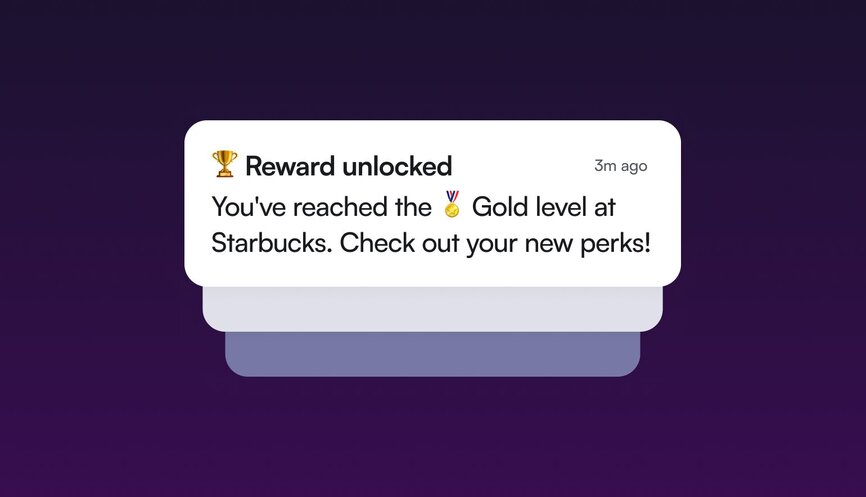
Even though gamification is common—as a community builder, you may be a little wary or intimidated about introducing it into your space.
Maybe you’re wondering:
Does it fit my community and content?
Will it work?
Where do I start? What do I need? How do I even do this?
The great news is that gamification in communities, when done right, can be even more impactful than you might think.
In this article, we’re going to talk about the unexpected benefits of gamification in communities and walk you through step-by-step how to start gamifying yours.
The unexpected benefits of community gamification
The point of gamifying your community isn’t just “for funsies”—but it does make everything more fun as a result.
More fun = more motivation for your community members.
Just like in the good ole’ days of “star charts” in grade school—there’s nothing like a little bit of healthy competition to get people who were previously sitting on the sidelines to jump into action.
Gamification in a community setting gives people a reason to:
- Make valuable contributions, and
- Keep coming back.
This both strengthens engagement and retention while simultaneously creating a lively atmosphere.
When it comes to online communities, gamification can also:
Create an authentic sense of belonging
You know when you start a new job, and your boss notices how well you’re doing? Or the stoic teammate on your volleyball team shouts you out for a great block? The little part of your brain that loves back-pats (and dopamine) lights right the heck up when people cheer you on.
It feels like “okay, people see me as part of the team now.”
At our core, all of us get a little rush when we’re told we did a good job—and it makes us want to accomplish more, and help others succeed, too. So it’s unsurprising that consistently recognizing and rewarding members creates a strong sense of belonging that makes your community a place that people want to be.
Nurture a member-led culture
When community builders, creators, or coaches start out, they can give personalized attention to all their new members. They welcome them, point them in the right direction, and even personally reply to their posts and questions.
But as communities start to grow, and your bandwidth gets smaller, it becomes difficult to be everywhere all at once. It’s easy to get overwhelmed by the need to keep up the same quality and standards that you started out with.
Gamification removes the pressure to be everything to everyone—and creates a space for your members to build a culture that matters to them. It incentivizes them to answer each other’s questions, to welcome and get to know new members, and to contribute meaningfully (so that it’s not you and your team replying to every post).
Plus, in the long term, it helps you identify potential brand ambassadors, again reducing the pressure to create all the value yourself. Win, win, win.
Set up an engagement engine that scales
If you’re reading this, chances are you care about your community members—whether there’s 20 or 2,000 of them.
But with every new person you add to your community, you feel the strain of upholding an amazing member experience. Most importantly? You want to keep it authentic, generous, and connected so that you avoid the unfortunate cliche of ghost town with dust bunnies for members.
So if you can’t do everything yourself, but you want to grow—how do you find a way to make sure people keep engaging, finding value, and staying in your community?
Automated gamification powers your community in the background—no matter how many members you add.
Turning engagement into a game allows you to provide a fun member journey, regardless of how much time you spend personally in the community. Which means that your impact—and potential for growth—isn’t limited to what YOU can individually do, or how many people YOU can recognize and celebrate and reward.
In short, gamification works behind the scenes to help you scale, authentically—even when you’re having a margarita on the deck.
Step-by-step guide to gamifying your online community
“That sounds great and all, but how do I actually go about gamifying my community?”
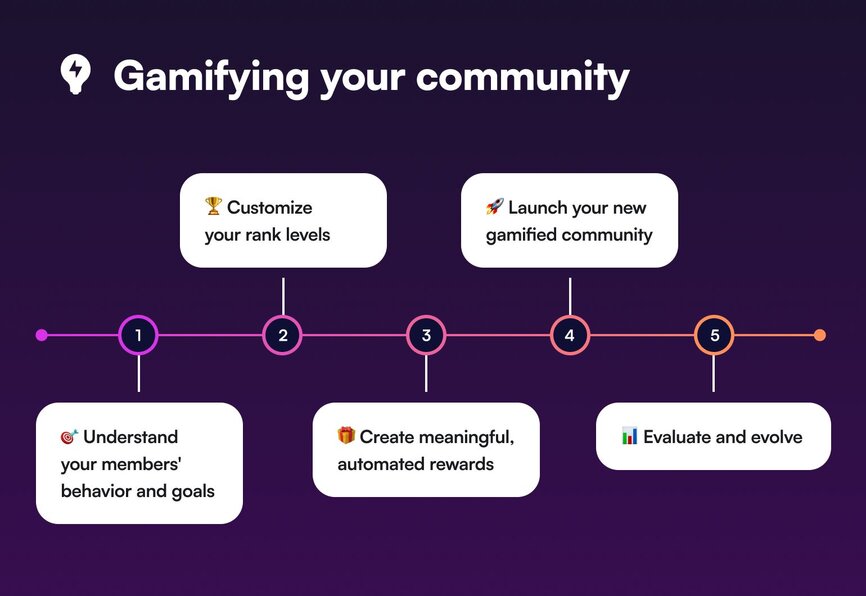
1. Deep dive into your members behavior and goals
Gamifying is all about motivating people to take certain actions or steps.
In order to design rewards that will motivate your members, you need to understand their current behaviors, pain points, and motivations. (If you don’t already!)
Here are some ways to get a better idea of what members do, why they do it, and what they’re trying to achieve:
- For behaviors:
- Review member analytics to see where the gaps are (New to community analytics? Check out our crash course on interpreting community analytics.)
- Assess the top-performing posts (likes, comments, views, etc) in the community and see if there are any similarities or trends among them. For example, are all the most engaging posts in your digital artists community about a particular tool, or about struggles with pricing? That can give you a hint about what motivates people to engage.
- For pain points:
- Post a poll in the community about their biggest struggles, or their goals (and what motivates them to work towards them)
- Send out an email survey, asking people to reply back with actual answers about their pain points and goals.
- For motivations:
- Ask to do some member interviews—and use the 5 why’s technique to really get to the bottom of why people are there, why they contribute, and what they get out of staying. Bonus: this is super helpful to refine your offers, improve processes, and encourage retention for your community members as well.
- Deduce! The posts that people engage with most are the ones that strike a chord in them: either questions or experiences they’ve also had, problems they’ve encountered, or things they’ve been trying to achieve or avoid.
Then, decide what behaviors you want to see more of, based on your business goals.
Do you want…
- To reduce churn?
- More daily active users (DAU)?
- More user generated content (UGC)?
- More revenue from upsells?
- A better event attendance rate?
- More posts created by members?
Whatever it is that you want, and your business needs, those are the behaviors you want to incentivize the most.
2. Customize your rank levels
Now that you understand your audience’s current behavior and motivations a little bit better, you’ll want to set milestones for them so that they have goals to work towards.
This depends on the platform that you’re using to host your community, but typically members earn points for getting likes on their posts or for completing certain actions, like filling out their profile information, sharing an introduction post, attending an event, putting up a profile picture, or signing up for a webinar.
As they accumulate points, they move up levels or ranks and unlock rewards. Believe it or not, but ranks can be as motivating as rewards—as the LinkedIn’s Top Voices badges program has shown.
Your job as leader is to both decide on the milestones, and name those levels in a way that aligns with your brand and content.
You could use generic rank names like:
- Newbie
- Member
- Active Contributor
- Top Voice
- Community Champion
Or, you can create rank names that are specific to your community. Let’s say you have a pirate-themed community, your ranks could be:
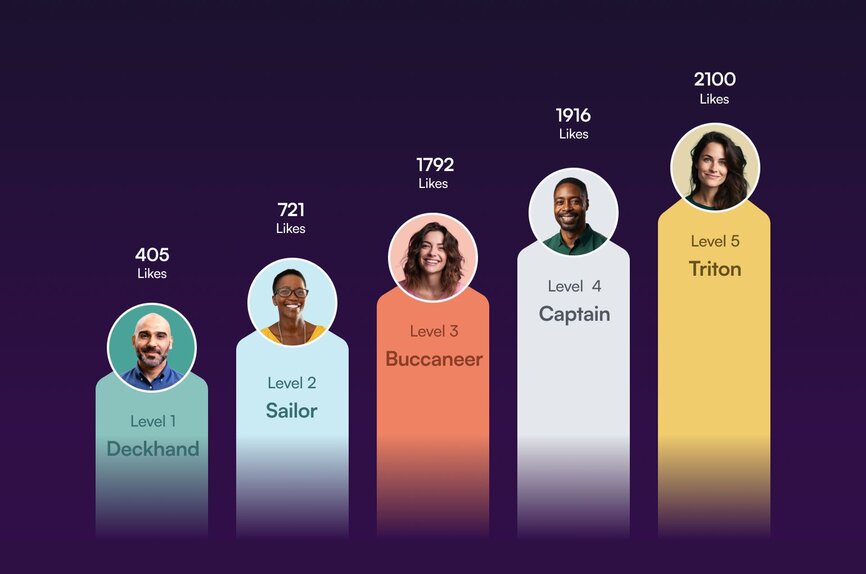
Ultimately the rank names are completely in your hands: it’s up to your creativity and what works best for your brand.
3. Create meaningful rewards and automate them
Next, you want to design thoughtful rewards that celebrate your member’s contributions.
Try to pick things that will be fun rewards for your members to unlock—not gimmicky swag or gift cards that only incentivizes people to participate once and then lose interest.
We want to facilitate authentic connections, collaboration, learning, friendly competition—not drop-in members that win a prize and bounce right out.
Here are some rewards you could consider for your different milestone stages:
- Sending personalized DMs thanking them for their contributions
- Award them a badge for reaching a certain number of contributions
- Adding them to a “Hall of Fame” member space
- Inviting them to intimate VIP roundtables and fireside chats
- Soliciting their questions for an upcoming Q&A
- Giving them a direct line to community leadership via a secret chat space
- Sharing exclusive discounts on your most-premium offerings
- Enrolling them in your scaled group coaching course
- Sending out a swag pack for reaching important milestones
Finally, if your platform offers this option—automate everything you can in this regard. You want to create an engagement engine that takes things off your plate, while helping your members feel seen, heard, and valued.
Have you checked out Circle workflows yet? Workflows allow you to automate tasks and batch actions—like, for example, the rewards we discussed above—so that you can put your gamification program on autopilot.
4. Launch and promo time
If a program launches, but nobody knows about it… did it really launch?
Or was it a fever dream you had while taking a shower?
All jokes aside, this is a big stumbling block for many community leaders. Self-promotion is hard—but without a launch plan, your gamification strategy is dead in the water. Of course, people will organically stumble upon it, but as we all know—over-communication is crucial for any big community changes.
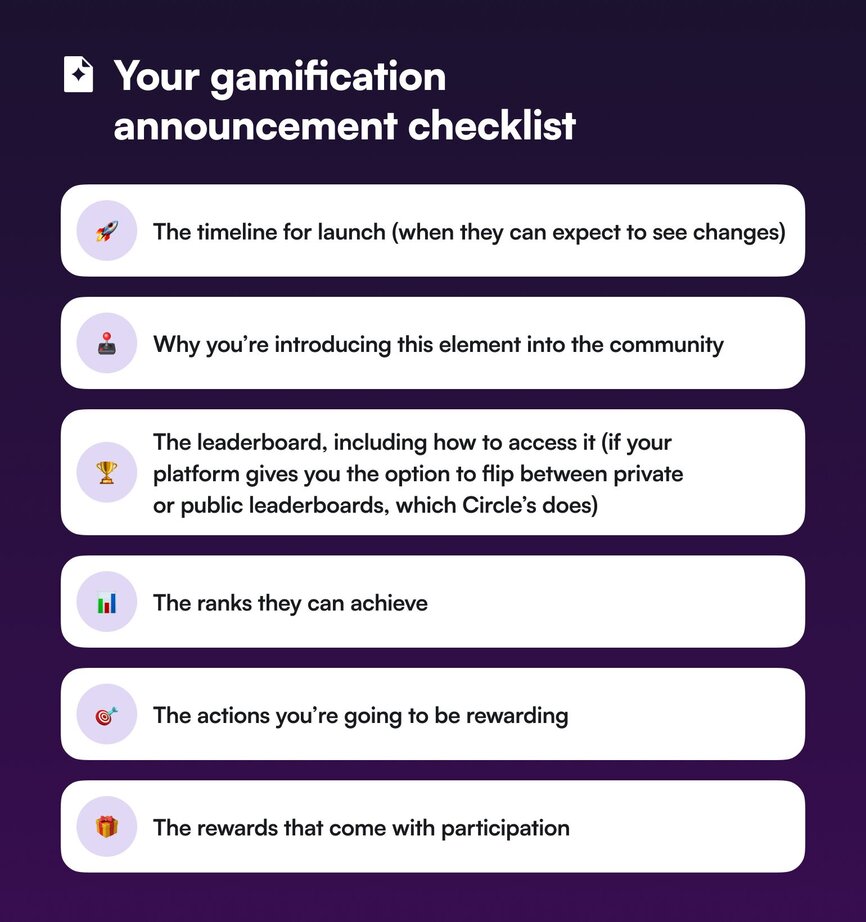
If you have the community size and resources to do it, you could also run a beta test with a small group of users first, to get their feedback and tweak the program accordingly.
5. Evaluate and evolve
You’ve done the research, set up the milestones, created drool-worthy rewards, and launched and promoted your gamification program.
Now what?
Now, you assess whether it’s working as intended. Give your program time to work, continue promoting it, and within 1-3 months (or whatever time you decide), assess whether the program is helping you meet your stated goals. For example, inside Circle, you can see what percentage of your posts are member-created. This is one (of many possible) positive signals!
Another way to evaluate whether the program is working? Ask your community for feedback. This is the perfect time to check if the rewards you’re offering are incentivizing the behaviors you want to see more of. If they’re not, you can adjust accordingly.
Remember: games evolve, and so does gamification. In order to keep people engaged and excited in the game, you will (at some point) need to add new things for people to strive for. As your community evolves and grows, so will your gamification strategy and the milestones you set for members.
Best practices for gamifying your community
Keep it simple: You don’t have to have 17 layers to this cake from the get-go. Set up simple milestones, valuable rewards, and automations. You can always add more as your community grows—but start simple and grow the program once you prove its impact for your community.
Continue promoting: Humans don’t like change. When you’re trying to convince groups of people to do something different than the way they’ve been doing them—repetition helps.
Grow your strategy as your community grows: The assessment and evolution phase is now your status quo. Put it on your calendar to review the value you’re getting back from your strategy—and double down or change the way you’re doing things based on the feedback you get.
Leaderboards help people imagine the future: You’ve communicated your milestones—now, make your leaderboard prominent and visible in your community. Call out the top contributors, create a ceremony, make it fancy. The more obvious you make the game, the more competitive people will get about playing it.
Reward contribution, not competition: “Yes, gamification can work for building social connection in communities. But the features must be deployed thoughtfully, personally, and to recognize contribution rather than competition with other members,” writes Carrie Melissa Jones, author of “Building Brand Communities: How Organizations Succeed by Creating Belonging”
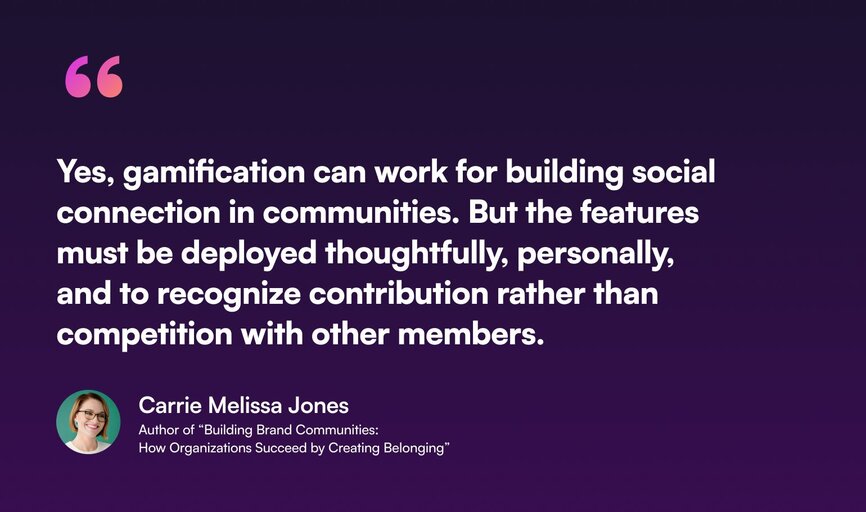
Ready to build your community gamification strategy?
Gamification is not just a gimmicky way to “get more posts, likes, and engagement.”
It’s an organic way to create a fun, engaging member-led community that finally allows you to scale your business, and create a meaningful member experience that scales along with it.
So if you’re looking for a community platform with gamification baked right in?
You’re in the right place.
Circle gamifies your members, discussions, events, courses, and content—all in one place, under your own brand. Plus, you get access to our customer community full of handy resources and over 10,000 community builders on the same journey as you.